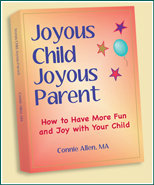Children of all ages have tantrums and emotional upsets. Interestingly, the steps to respond to tantrums are the same, whether your child is 2 or 25. Even if you have an older or even grown child, this info applies to your child also.
Thanks to my work with children and parents, I’ve discovered there is more than one kind of tantrum. Many people believe tantrums are only about a crying, upset child who doesn’t get his way, and there is one way to respond to all tantrums.
Yet if you treat all tantrums as if they are the same, you miss the deeper communication your child is giving you.
Yes, a tantrum – whether it is loud, screaming and crying or silent and withdrawn – is a communication from your child. Your child is telling you something important.
It is not just a manipulation or an act of defiance. Your child is not testing you, even though it may feel like that.
For various possible reasons, your child has chosen this method to communicate with you.
So far, I’ve discovered 6 different kinds of tantrums with 6 different messages. Some of them are somewhat similar and yet each requires that you respond in a unique way. I’d like to share a couple of them with you.
First is the kind everyone generally thinks of when they hear the word ‘tantrum.” Johnny wants something, and you say, “No,” which prompts a screaming, crying scene. What makes this unique is that it’s part of a repetitive pattern your child has learned over time.
His communication sounds something like this, “I want something and you’re not giving it to me. I’ve used screaming and crying before and it’s worked so I will keep this up until you give in and give me what I want just to get me to stop.”
Some parents have told me their child can go on for hours. This is exhausting and no-fun for you or your child.
This child doesn’t know or trust the power of his words to have an impact with you so his default is crying as a communication. [Read more…]


 Just a little bit about me -- I'm a coach for parents, visionary guide, insightful trainer, and powerful consultant.
Just a little bit about me -- I'm a coach for parents, visionary guide, insightful trainer, and powerful consultant.